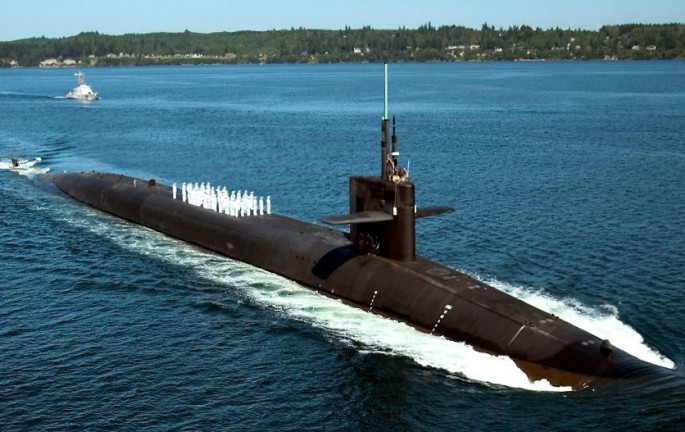The United States has sent two clearly ominous warnings to China and North Korea it's prepared to use its military power to thwart their ambitions to dominate Asia and expel the U.S.
For the first time since the 1980s, the United States has deployed one of its ballistic nuclear missile submarines (SSBNs) to Guam. Analysts see this as a clear signal U.S. Navy SSBNs have been patrolling and will continue to patrol the Pacific Ocean and waters closer to the Chinese and North Korean mainland.
Equally ominous, the U.S. and Japan said 37,000 of their troops for the first time will conduct amphibious assault drills in an exercise that has taken place over the last 17 years. This number of troops is the biggest committed to this exercise now taking place around Japan, Okinawa, Guam and the island of Tinian in the Northern Marinas, an American territory.
The USS Pennsylvania (SSBN 735) is making what the Navy formally describes as a "scheduled port visit" to Guam. The Pennsylvania's unexpectedly showing-up at Guam, however, comes as an awkward time of rising military tensions involving China and North Korea.
The Navy said it revealed the Pennsylvania's port visit to Guam in part to show its presence to allies and adversaries in Asia.
"This specific visit to Guam reflects the United States' commitment to its allies in the Indo-Asia-Pacific, and complements the many exercises, training, operations, and other military cooperation activities conducted between the US and its partner nations," said the Navy.
"Ballistic missile submarines such as USS Pennsylvania are on patrol continuously, providing a critical, stabilizing and highly effective element of the US nuclear deterrence force."
The Pennsylvania is one of 14 Ohio-class SSBNs and carries 24 Trident II D-5 ballistic nuclear missiles.
Exercise Keen Sword 17 taking place from Nov. 1 to 11 involves 11,000 US and 26,000 Japanese troops.
Keen Sword is a joint and bilateral exercise held between the U.S. military and Japan Self Defense-Forces (JSDF) in an effort to increase operational readiness and interoperability to enhance the Japan-U.S. alliance.
U.S. Navy and Marine Corps units and personnel will combine with JSDF units to conduct a range of amphibious missions for the first time since the inception of Keen Sword. Accompanying surface ships are conducting live-fire exercises and other maritime missions to simulate protecting the amphibious task force and providing supporting fires to ground forces ashore.
"We're honored to work together with our Japanese Self-Defense Force counterparts and learn from each other," said Rear Adm. Marc H. Dalton, Commander, Amphibious Force United States Seventh Fleet.
"By improving our bilateral amphibious capability, we increase interoperability and readiness as part of our deep and long-standing military cooperation in support of the U.S.-Japan defense alliance."
Personnel assigned to Amphibious Force 7th Fleet, 3rd Marine Expeditionary Brigade, and 3rd Marine Division have embarked on Japan Maritime Self Defense Force (JMSDF) ship JS Hyuga (DDH 181) to assist in integration of U.S. forces into the amphibious task force and overall build on bilateral relationships.
JS Hyuga is the flagship for a four-ship Japanese amphibious task force, complimented by USS Comstock (LSD 45) and embarked 11th Marine Expeditionary Unit Marines.
The culminating amphibious landing will include an insertion of ground forces via combat rubber raid craft and a heli-borne assault.



























